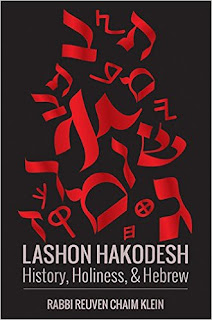Hegyonei Haparasha and Otzar Hakippa
Hegyonei Haparasha: Bamidbar
Rabbi Ari Wasserman
Distributed by Feldheim / 504 pages (Heb.)
R' Ari Wasserman recently released the Bamidbar volume of
his “Hegyonei Haparasha” series. For those unfamiliar with his original and
trailblazing style, each volume of Hegyonei Haparasha (one volume per Chumash)
discusses three to five halachic issues that are relevant to every Parsha. The
topics covered in the Bamidbar volume are especially relevant and practical for
the modern Jew, such as the halachot of: reproduction, shaking hands/touching members
of the opposite sex, women’s hair covering, neighborly relations, eating with
gentiles, and some kashrut related issues, among many others.
Every chapter opens up with an introduction of the topic at
hand. The topic is then presented in a chronological order beginning with the original
sources, usually biblical, moving on to the Talmudic sources along with the
relevant rishonim and achronim (clearly explaining the differences and
arguments between them) right through to the Rambam, Shulchan Aruch, and the
halachic authorities of our generation. There is a chapter summary at the end of every chapter.
R' Ari essentially covers anything and everything
worth knowing on each topic. The Hebrew is easy and the presentation is crisp
and clear. The Hegyonei Haparasha series is exceptionally valuable to educators
as all sources are cited in full, making for easy and instant source sheets in
preparation for lectures and shiurim.
Here's a sample (although it doesn't do justice to the breadth and scope that every topic is presented in):
נסיעה
מעורבת באוטובוס ורכבת אנשים ונשים
באגרות משה פסק דבעיקרון אם אין זה דרך
תאוה וחיבה מותר עמידה וישיבה ליד אשה ברכבת ואוטובוס, ולכן אם אין מקום אחר אין
גם איסור לישב ליד אשה.
אמנם בשו"ת ויען יוסף (יורה דעה
סימן קמד אות ב) דן אודות מי שנזדמן לו מקום מושבו במסילת הברזל סמוך לאשה היושבת,
ויש הפסק אויר קצת באופן שאין שום חשש נגיעה אף מבגדו לבגדה (עיין בשבת יג, א), ובתוך
דבריו כתב דעל פי חסידות החיוב תיכף ומיד לקום משם, ולדעתו אם לא מיהר תיכף ומיד
לקום מטעם שחשש על חילול ה' והצטער בלבו על זה, לא עביד נגד מדת חסידות, וכל לבבות
דורש ה'.
ובספר התורה המשמחת (עמוד 289) מובא מעשה
במרן הגאון רבי שלמה זלמן אויערבך זצ"ל שעלה לאוטובוס בבית וגן ובתחנה הבאה עלתה
אשה בלבוש לא צנוע והתיישבה על ידו. הגרש"ז צלצל בפעמון, וירד בתחנה הקרובה, שם
המתין לאוטובוס נוסף שיסיעו הביתה.
כששאלוהו מה ראה לנהוג כן, ענה בפשטות:
היו לפניו שלושה אפשרויות, האחת, להמשיך לשבת ולהתעלם ממנה, אלא שאין זה נעים ויש
בזה חילול ה' מצד הרואים. השניה, לקום ולעבור לסוף, ולהמשיך את הנסיעה לביתו
בעמידה, אך אז היתה האשה מבינה שקם מחמתה והיתה נפגעת, ומצד בין אדם לחבירו לא רצה
לפגוע בה. לכן בחר באפשרות השלישית לרדת.
ובספר ועלהו לא יבול (ב' עמוד 182) מובא
בענין זה מעשה נוסף, וכה דבריו: סיפר לי בן דוד איש שערי חסד, שפעם הוא ישב ליד
הרב באוטובוס, עלתה אשה לאוטובוס ולא היה לה מקום לשבת. הרב אמר לבן דוד שלי, או
שהבן דוד יתן לאשה את מקומו לשבת, או שהוא יתן לה את מקומו. הבן דוד עמד והאשה
ישבה ליד הרב.
On a personal note, although I have yet to meet R’ Ari face
to face, we’ve enjoyed a warm correspondence with each other for many years
already. In addition to the fact that halacha is my preferred area of
concentration, I have an unprecedented respect and admiration for authors of
Torah works who find themselves as much in the Torah world as they are in the
“real world.” R’ Ari takes first prize in demonstrating that Torah im Derech
Eretz is alive and well, and that full time employment need not compromise
one’s potential and accomplishments in learning. His rigorous schedule and
commitment to everything he does has made him a proven leader in both the Beit
Midrash and the boardroom.
Every volume Hegyonei Haparasha is a vital necessity for
anyone who wants to know or explore Halacha with any depth.
Rabbi Ari Wasserman
2 Vol. (Heb.)
R’ Wasserman also recently released his “Otzar Hakippa”. The
two volume Otzar Hakippa is simply an exhaustive and breathtaking encyclopedic
work that covers absolutely everything and anything that has ever been written
in Torah literature about head coverings. It’s that simple.
Whether it is
biblical, Talmudic, halachic, hashkafic, historical, there is nothing you can
think of regarding head coverings that is not dealt with. And then some. Kippot,
shtreimels, shaitels, and spodeks. Head coverings as they apply to sleeping, exercising, working, traveling, size, praying, children, and much much more. It’s all there. It's full of fascinating history and folklore (be sure to check out the piece on the
Christian prophet.)
Otzar Hakippa is written in a very clear manner, with
summaries at the end of almost every chapter. It is certain to be the greatest reference work on the subject of head coverings for all time.
To order either of these two masterpieces: ari@amaadvantage.com



